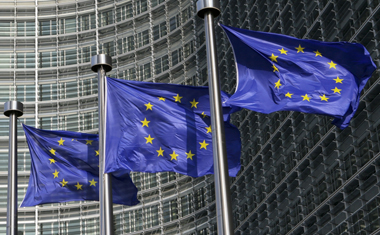MiFID II requirements “naïve” and “terrifying” says industry

The European Commission has been accused of being naive
The financial services industry faces a daunting task as the European Commission’s MiFID II legislation draws close to its final deadline, and grave concerns about inconsistencies in the rules and the pressures of meeting it remain.
Speaking at the FIX Trading Community conference this week, Stephen McGoldrick, regulation co-chair at the FIX Trading Community and director at Deutsche Bank, said: “It’s quite terrifying when you look at all there is to be done. “The mass of work brokers are facing is huge. As for the buy-side, In MiFID one there were big areas where they could say, ‘It’s OK, the sell-side will take care of that for us’. That luxury is not going to be available to them this time.”
MiFID II is the Commission’s attempt to harmonise securities regulation across the 28 member states of the European Union. Due to be implemented by Q1 2017, the rules introduce new reporting obligations for securities transactions, new requirements for trading venues and participants, and new restrictions on OTC and dark trading, as well as a host of measures designed to improve transparency in both non-equity asset classes and in stocks. But the legislation has had a contentious history, with fierce debate every step of the way since the MiFID review began in 2009. Even now, the rules are far from finalised.
“There are some serious inconsistencies that we need answers to,” said Mark Hemsley, chief executive at BATS Chi-X Europe. “Algorithm testing is one – will trading venues be required to build a full testing environment? These are expensive and take time to work out – and even if you have a full test environment it doesn’t mean you can replicate a day’s trading, because so much that happens relies on the interaction of different markets and incoming data. What about co-location? Just cutting two bits of cable to be the same length doesn’t mean you’ll get the same latency. Some of the statements coming from the regulator show a level of naïvety.”
Hemsley added that the additional overheads for Multilateral Trading Facilities and Organised Trading Facilities would be “phenomenal”, due to the reporting requirements, record keeping on individuals and co-location requirements. Part of the solution, he suggested, would be to ensure open access to clearing, trading and central securities depositories, so that costs could be kept down.
Other suggestions raised in the debate include the creation of a cross-market utility, owned by both the buy-side and the sell-side, which would provide a consolidated tape of post-trade data. Although MiFID II provides for the creation of such a tape in the absence of an industry effort to create one, at present the initiative has been left up to tender. Some participants even proposed that a similar model could be applied to trading venues.
“I hope we in this industry will find a new way of working together and embrace the concept of a utility trading venue, which would be a new benchmark in transparency and openness,” said McGoldrick. “People need to do MiFID collaboratively. If they tackle it in isolation, there’s going to be a shambles of ill-fitting data.”
Other speakers emphasised the need to prepare now, rather than to wait for further clarity on the regulation. Although MiFID II’s technical standards are still being decided, the level one text has now been agreed and will not change between now and implementation day. Level one consists of the overall principles and concepts, while level two covers the technical details.
“There is a risk that people say, ‘MiFID II is not finished yet we don’t have to look at it until it is’. That approach will cost you a lot,” said Edwin Schooling Latter, head of markets infrastructure and policy at UK regulator the FCA. “We at the FCA have to monitor new transaction reporting flows, have a mechanism to monitor position limits, do transparency monitoring – so it’s not just market participants who will have to meet these new requirements. We will, too.”











































